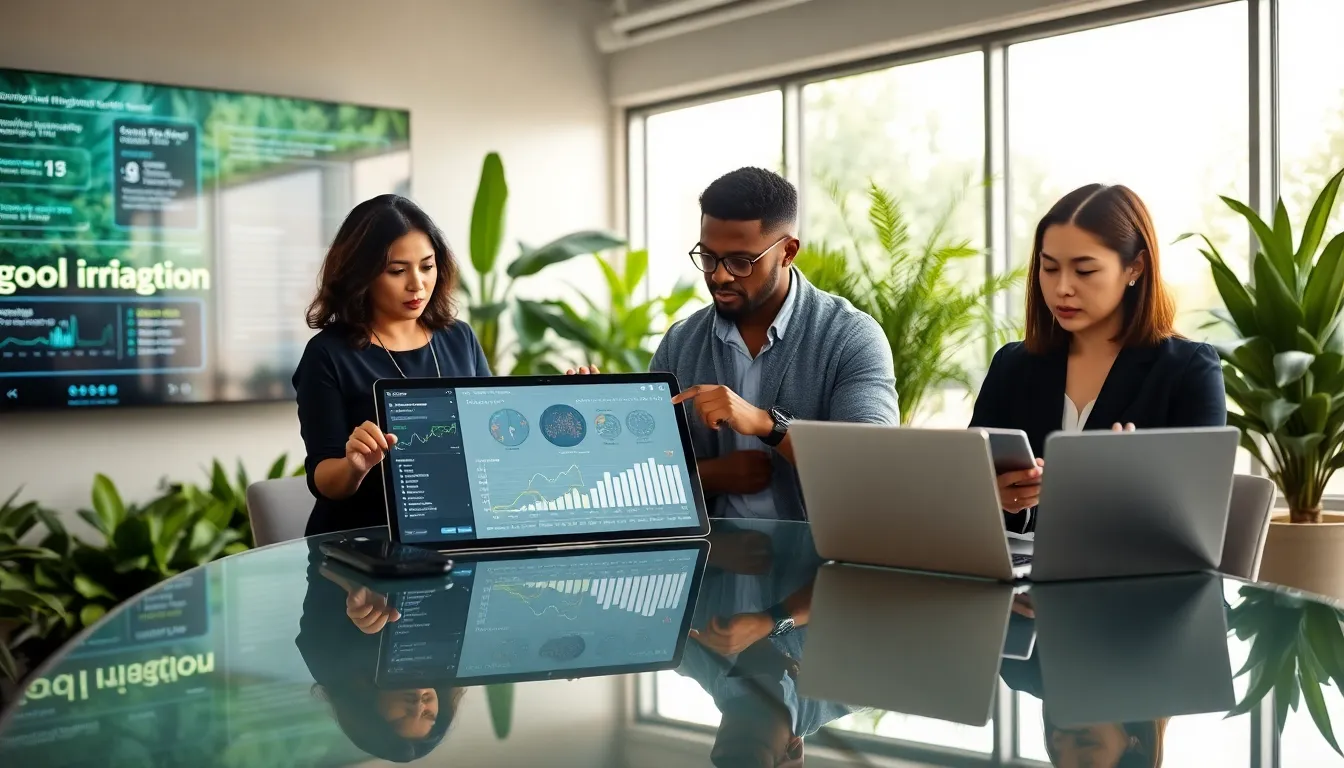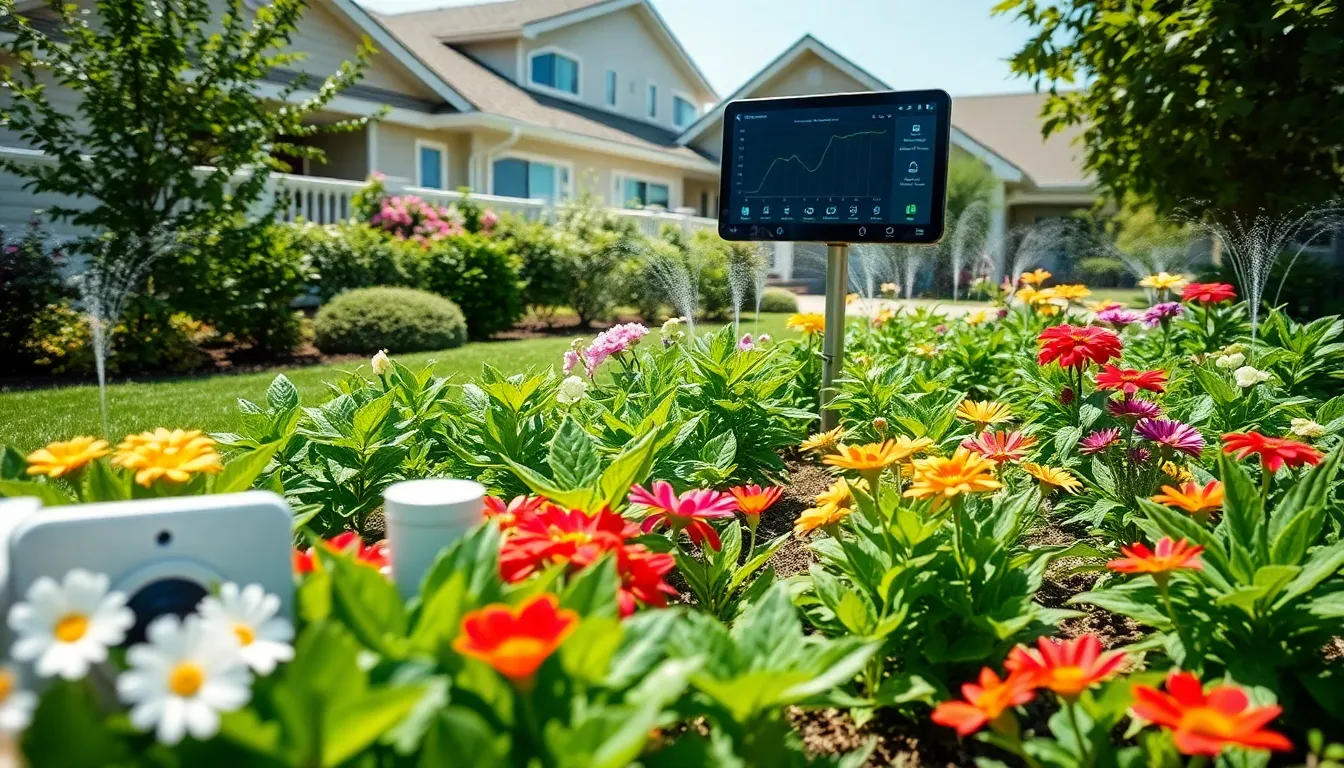Imagine your garden is the talk of the neighborhood, thriving like it’s on a high-tech spa day, while your neighbor looks on in envy as his plants wilt under the unforgiving sun. Welcome to the world of smart irrigation. This clever technology harnesses innovation to keep your plants happy and hydrated, all while saving you time and resources. If you’ve ever been frustrated with overwatering or under-watering, smart irrigation could be the solution you didn’t know you needed. Let’s jump into how this revolutionary technology can turn your landscape into a vibrant paradise with minimal effort.
Table of Contents
ToggleUnderstanding Smart Irrigation Systems

Smart irrigation systems are like the personal trainers of the gardening world. They monitor the needs of plants, weather conditions, and soil moisture levels to keep everything in tip-top shape. Think of them as the brain behind the brawn of watering systems, equipped with sensors, data analytics, and sometimes even mobile apps to automate the whole process. These systems can vary in complexity from simple timers to sophisticated setups that interact with weather forecasts to optimize water usage. This means no more guessing games on when to water: just straightforward, efficient plant care.
Components of Smart Irrigation Technology
Equipped with advanced technology, smart irrigation systems are made up of several key components.
Sensors
First, we have sensors. These handy little devices assess soil moisture, temperature, and even sunlight levels. They determine if the plants are thirsty or if a refreshing rain shower has done the job.
Controllers
Next up are controllers, the command center of your irrigation system. They manage everything from the schedule of watering to how much water is used, based on the data received from the sensors. Some models can even be connected to your smartphone, allowing you to manage your garden from anywhere.
Drip Lines and Sprinklers
Then there are the drip lines and sprinklers, the muscle behind delivering water directly to the roots. Drip irrigation is particularly effective as it minimizes water waste and ensures that every drop counts.
Weather Stations
Finally, integrated weather stations take the smart irrigation concept up a notch. They collect real-time environmental data, allowing the system to adjust automatically based on current conditions, making it rainproof and drought-resistant.
Benefits of Implementing Smart Irrigation
The benefits of smart irrigation are practically overflowing, much like a well-hydrated garden. First and foremost, efficiency skyrockets. By thoroughly monitoring the needs of your plants, these systems can reduce water usage by up to 50%. That’s not just eco-friendly: it’s also wallet-friendly.
Also, they reduce the risk of overwatering, which can lead to unhealthy plants and waterlogged soils. Healthier plants mean less time spent fixing problems and more time enjoying your garden. On top of that, smart irrigation systems are often compatible with other smart home technologies, making it easier to manage everything from a single smartphone app. That means more peace of mind for busy homeowners.
Last but not least, these systems can even help with compliance to local watering restrictions, making them a smart choice for cities facing droughts.
Challenges and Considerations
Even though the many benefits, implementing smart irrigation isn’t without its hurdles. One of the primary challenges is the initial investment. Smart irrigation systems can be pricier upfront compared to traditional methods. But, consider the long-term savings on your water bill and plant care, it often pays for itself quite quickly.
Also, there’s a learning curve. Getting accustomed to the technology can be daunting for some users, especially those who aren’t tech-savvy. Also, there are concerns about reliability and maintenance of these systems. Regular updates and checks are crucial to ensure that everything runs smoothly, as even a high-tech system can fall prey to malfunctions.
Future of Smart Irrigation Technologies
The future of smart irrigation looks incredibly promising, with innovations popping up faster than you can say ‘green-thumb tech.’ Artificial intelligence is becoming a game-changer, allowing systems to learn from their environment and improve efficiency over time. Just imagine a system that knows when you’re on vacation and waters the plants, fabulous, right?
Also, integration with IoT (Internet of Things) devices is increasing. This will enable communication between devices, enhancing user control and data accuracy. Enhanced analytics will also provide deeper insights, helping gardeners make informed decisions for healthier landscapes. With urban areas expanding and climate change challenges growing, investing in smart irrigation technology is not just practical: it’s essential.



